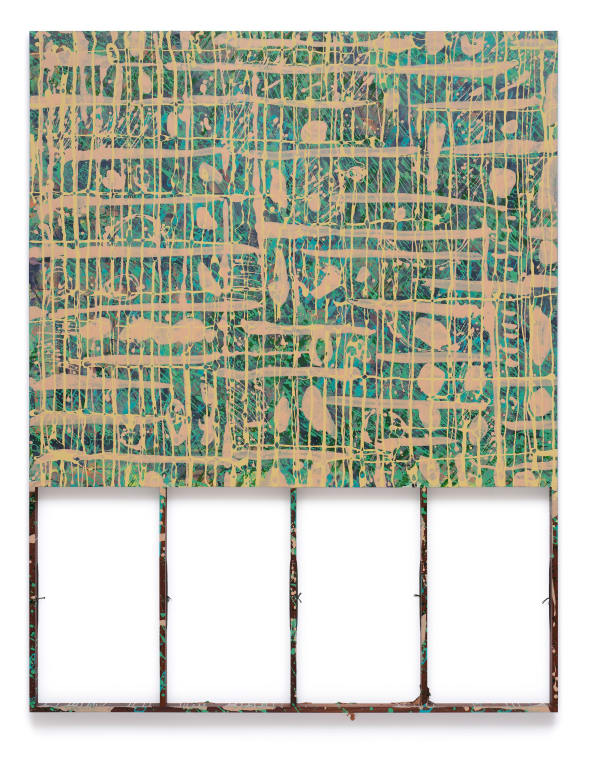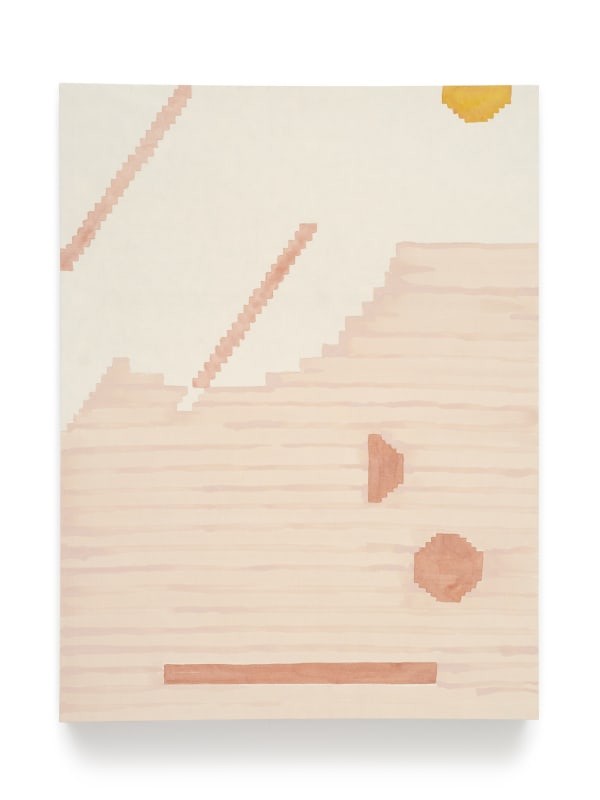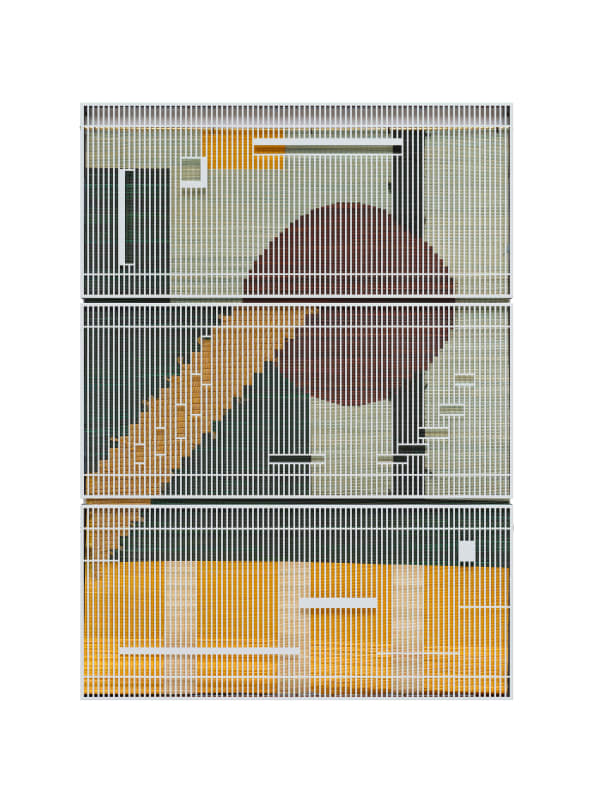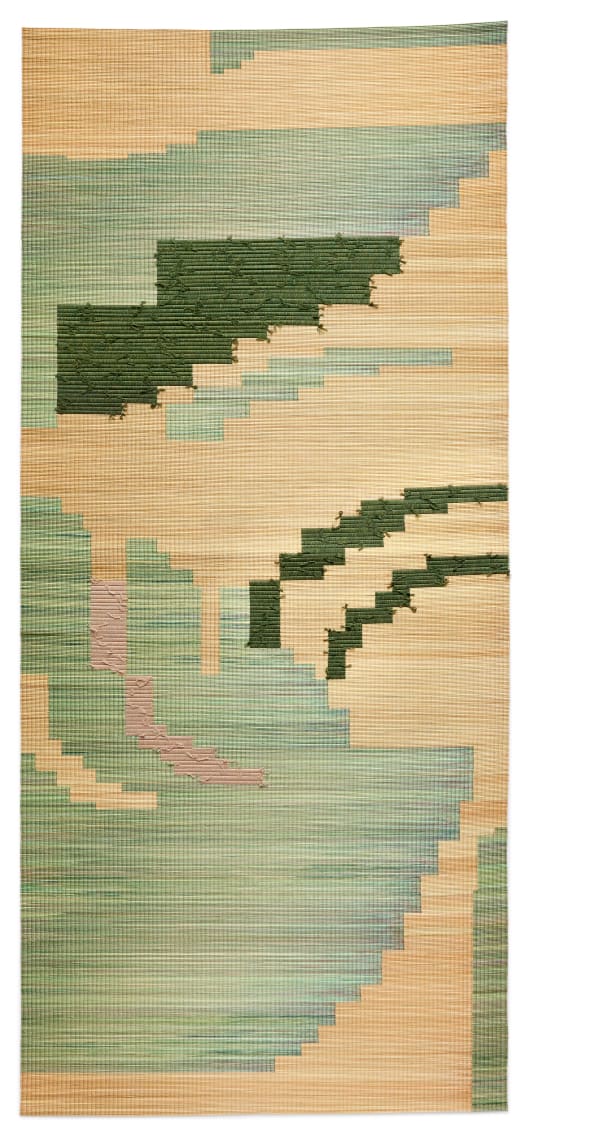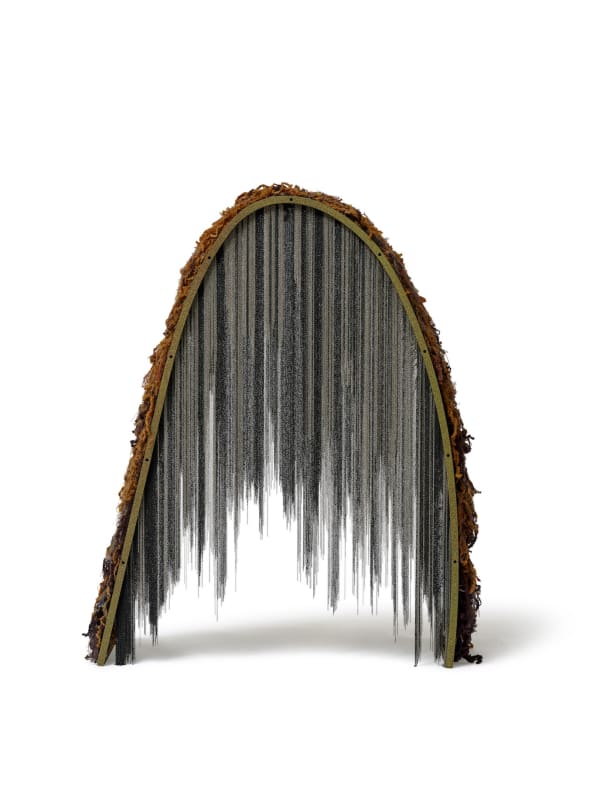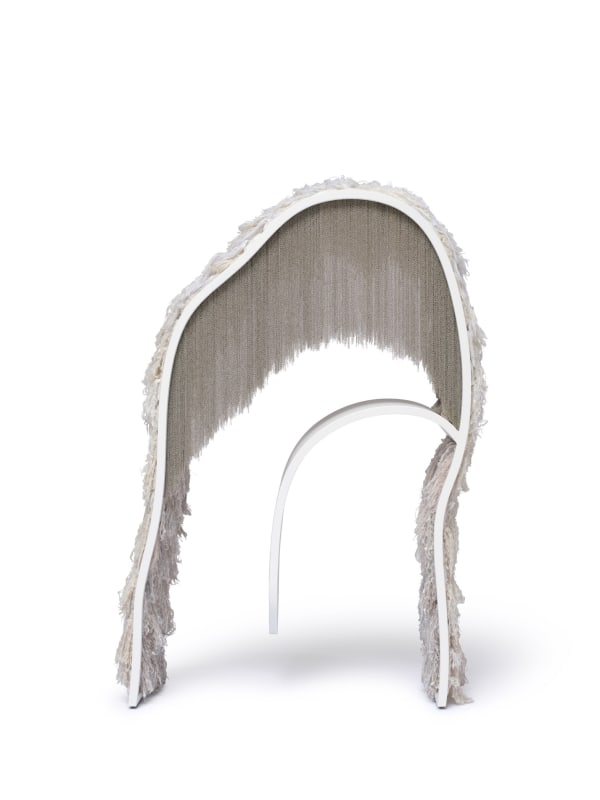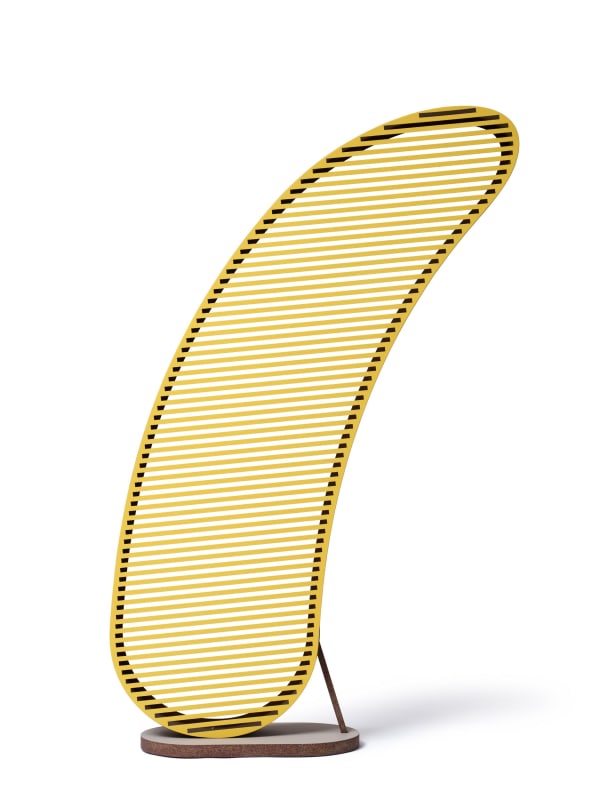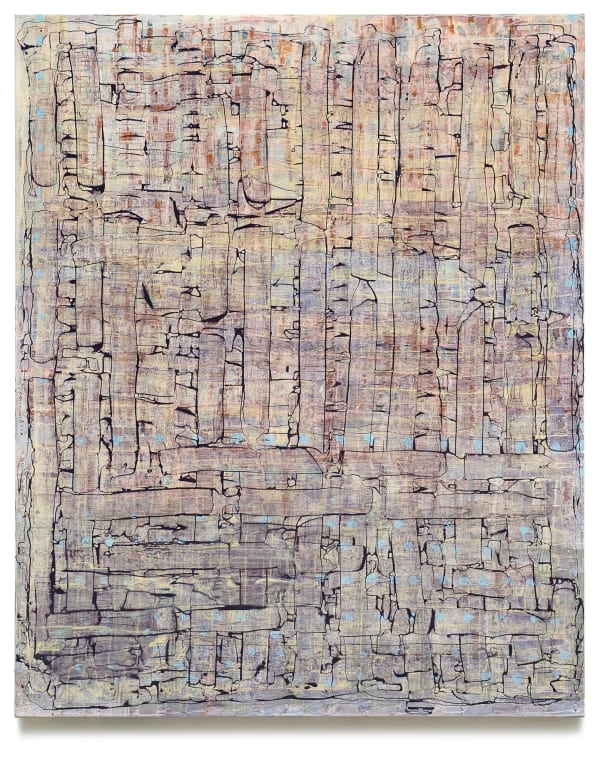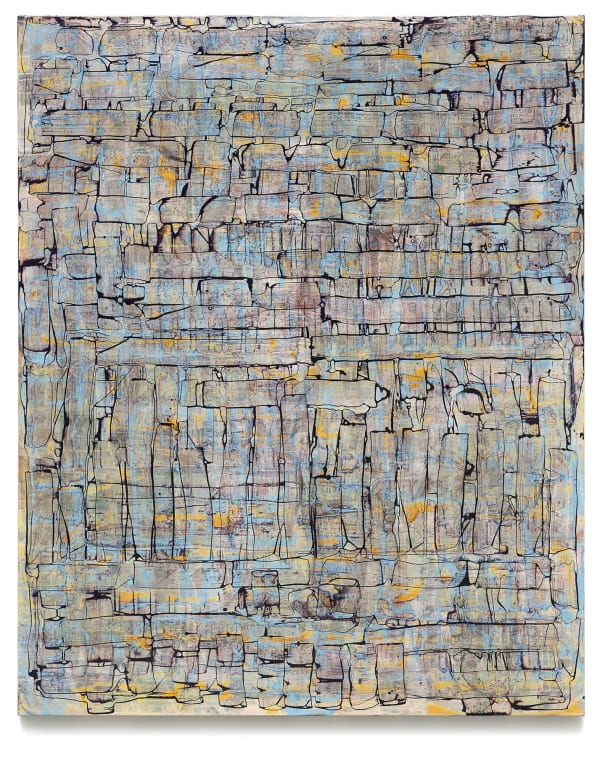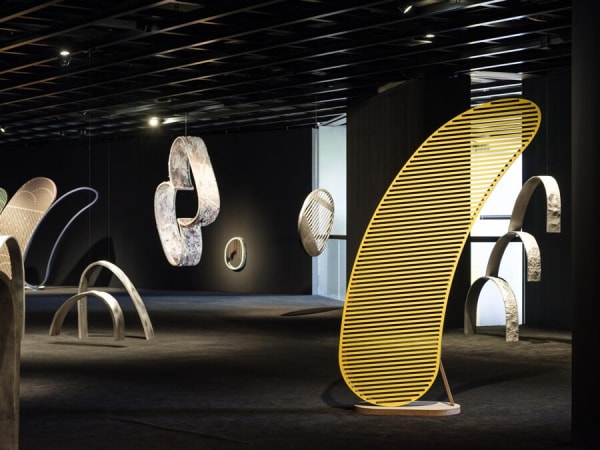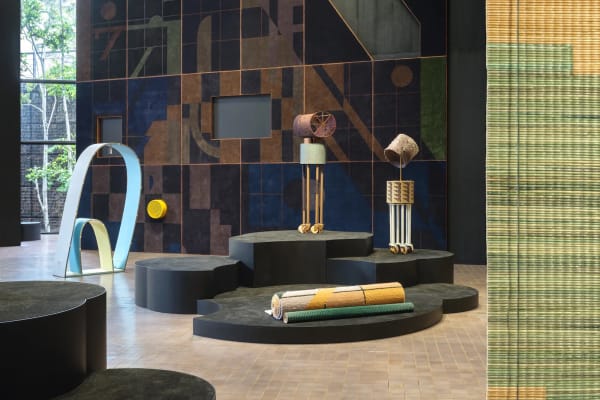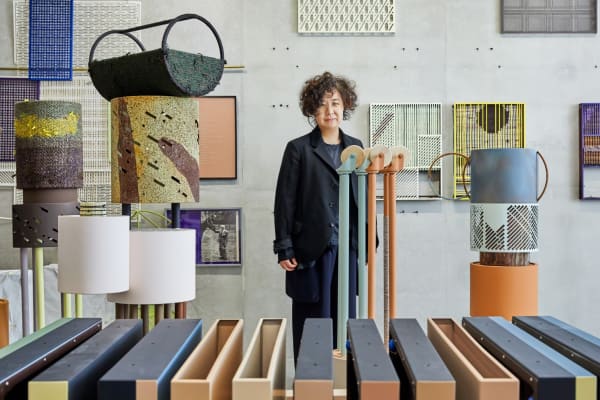-
Tradition is about thinking about the present more deeply.*
—Suki Seokyeong Kang
Tina Kim Gallery is pleased to announce Suki Seokyeong Kang, the gallery’s second solo exhibition of leading South Korean contemporary artist Suki Seokyeong Kang, opening May 2 and running through June 15, 2024. Expanding on the themes that characterize Kang’s critically acclaimed multimedia practice, the exhibition will include works never before seen in New York, many of which were specifically created for her major 2023 solo exhibition, Willow Drum Oriole, held at the Leeum Museum of Art, in Seoul.
The theme of being present connects the diverse works in this exhibition. Kang’s practice centers on the exploration of tension, boundaries, and balance. Her paintings and sculptures negotiate a harmony between old and new, reinterpreting traditional art forms like Jeongganbo and Chunaengmu in contemporary contexts.1 References to the four seasons, works evoking sound and movement, and the balancing of near and far views create a sense of wholeness and inevitability, asking viewers to find peace and presence in the here and now.
On view in the gallery are works from Kang’s celebrated series Jeong, Mat, Narrow Meadow, and Mora, as well as two new sculpture series, Mountain and Column. For each of these bodies of work, she has developed a distinct formal vocabulary that combines traditional techniques with specific materials to create dynamic forms inspired by Korean culture yet deeply engaged with contemporary social issues and art history. Rooted in her training as a traditional painter, Kang’s works explore how, despite our many differences, we remain connected. In focusing on how ideas of the past manifest today, Kang employs the traditional concept of “Jinkyung,” or “true-view,” painting, which seeks to represent the essence of the subject through the principle of shared symbolism. In this way, her work frames what she describes as “the beautiful moment of sharing time,” assisting us in being present in a space where “we can constantly reconcile imbalances and conflicts and achieve complete harmony with each other.”
* Quoted in Connie Butler, “The Subtle Smile: Suki Seokyeong Kang’s Sympathetic Object,” in Willow Drum Oriole (Seoul: Leeum Museum of Art, 2023). All quotes by the artist are from this exhibition catalogue.
1 Jeongganbo is a type of musical notation dating back to the Joseon dynasty, in which the duration and pitch of sounds are notated within a square grid shaped like the character “Jeong” (井). Chunaengmu, or the Dance of the Spring Oriole, is a solo Korean court dance that originated during the later period of the Joseon dynasty.
-
Jeong
-
For Kang, painting is the primary basis of seeing, and her approach to framing our environment is based on the grid. In modern art history, the grid is a formative element and governing principle that has informed abstraction; for the artist, it is also connected to traditional forms in Korean music, art, and architecture. In the Jeong series, she uses the square as a basic unit for dividing and demarcating space. Kang sees the square as a space where the possibility of movement can be actualized: “the grid traverses the various threads of histories as I meditate [on] the past within the contemporary moment, and it manifests in the many forms of square-shaped spaces that I explore with my practice.” The Jeong paintings consist of mixed media on silk mounted on paper. Like the Mat paintings (also on view), they include distinctive geometric lines and dots that allude to traditional notation, linking choreography and sound with the viewer’s own interpretation of the work.
-
Mat
-
Mat Black Mat
-
Combining traditional craft with modern materials, Kang’s Mat series is based on the woven Hwamunseok mats originally designed to indicate the bounded space for dancing the Chunaengmu, the solo court dance of the Joseon dynasty. Installed in the first gallery, Kang’s new Mat Black Mat series returns to the fabrication and materials used in this original series (also on view), but these new works are significantly larger, signaling a new direction. Made with dyed reeds that are woven and tied together with thread in various colors, these vertically formatted compositions are suspended from the ceiling at different heights. Echoing traditional landscape scroll paintings and speaking to the vital role played by mountains as a symbol of harmony, the Mat Black Mat installation blurs the distinction between near and far views, reinforcing Kang’s interest in a “true-view” landscape and laying the ground for a dialogue between her works within the gallery space. Moreover, the abstract patterns of Mat Black Mat embody a sequence of continuous movements within a square space, underscoring its correlation with the artist’s performance, “Activation.”
-
Mountain
-
In this series of freestanding sculptures, Kang combines welded steel armatures scaled to the body with expressive elements consisting of colorful threads and painted chains that hang freely from the open forms. Sensitive to the slightest breeze, these surface elements echo both brushstrokes and the vibrant energy of nature, as highlighted by subtitles evoking the four seasons—Mountain: (spring), (summer), (autumn), (winter). The Mountain sculptures are based in her study of the traditional “true-view” style of framing landscape, as they represent shared cultural iconography while establishing a place to congregate. Transforming the entire gallery into a three-dimensional environment, the sculptural scene responds subtly to light, wind, and people’s movements, allowing viewers to look at the traditional past from the perspective of the present.
-
Column
-
A new series of standing oblong sculptures—collectively titled Column—suggest both a minimal modernist iteration of the mountain and something more architectural. But for Kang, the column form conveys greater mobility than architecture; here, the steel elements reference the grid and its ability to frame the body in space. Each uniquely painted standalone Column demonstrates Kang’s ability to expand and unfold the genre of painting in a synesthetic way, as the viewer navigates the room.
-
Mora
-
It is in Kang’s Mora series that the combination of painting tradition and the artist’s material specificity is most evident, with the passage of time clearly revealed through repeated painterly traces inscribed into the ground. Like the Jeong series and other works, Mora is rooted in the artist’s abiding interest in “unit systems,” exploring how basic units of measurement can be utilized to fabricate an object. Here, Kang uses paint as “a material with potential similar to the ground or platform”: she layers nearly translucent pigments on top of one another on Hanji or silk, creating allover compositions in which the passage of time is clearly revealed in repeated patterns of vertical and horizontal marks. Making its New York debut, the Mora series takes its title from a linguistic term for the smallest phonological unit of spoken language, equal to or shorter than a syllable. The works again evoke Kang’s interest in ordered systems that facilitate relationships, creating space to reconcile our conflicts and achieve harmony, thereby allowing the artist to “open up these conditional possibilities that are inherent to artmaking.”
-
About the artist
Learn MoreSuki Seokyeong Kang’s (b. 1977, Seoul) research-driven practice spans media, incorporating sculpture, painting, installation, video, and performance, which the artist describes as “Activation,” as she investigates the notion of space and its relationship to an individual’s position within society. Shaped by her background in painting, Kang’s practice realizes the spatiotemporal potentials of the discipline through a variety of materials and methods. Kang utilizes the formal language of the grid used in traditional Korean musical notation as a spatial and social structuring device. The grid is translated and reproduced as standing formations in her works that balance against, hinge on, and even protrude from the wall. Her sculptures appear and are further activated in her videos or performances. Her use of Hwamunseok—mats used in traditional Korean court dances, produced from woven sedge by Korean craftswomen—signals the minimum space an individual is provided in society. As these elements multiply, Kang configures them into a rich visual score suggesting the possibility of a collective consciousness rooted in individual action.
Suki Seokyeong Kang holds a BFA and an MFA in Oriental Painting from Ewha Womans University, Seoul, and an MA in Painting from the Royal College of Art, London. In 2018, Kang won the Baloise Art Prize at Art Basel, with her works acquired by Mudam Luxembourg. A series of her large-scale public sculptures, titled Here We Hear, was installed in 2022 by Qatar Museums in Doha. She has had solo exhibitions at the Leeum Museum of Art, Seoul (2023); Buk-Seoul Museum of Art, Seoul (2019–20); Mudam Luxembourg (2018); and the Institute of Contemporary Art, Philadelphia (2018). Her works have been featured in the Venice Biennale (2019), the Shanghai Biennale (2018), the Gwangju Biennale (2018), and the Liverpool Biennial (2018). Kang’s work can be found in the collections of the Leeum Museum of Art; the National Museum of Modern and Contemporary Art, Seoul; the San Francisco Museum of Modern Art; the Los Angeles County Museum of Art; Walker Art Center, Minneapolis; Mudam Luxembourg; the Booth School of Business at University of Chicago; and Princeton University Art Museum, New Jersey.
-
-

Suki Seokyeong Kang’s All-Enveloping Landscape
Frieze October 5, 2023In 1751, during the late Joseon dynasty, the artist Jeong Seon broke with the tradition of idealized, imagined landscapes in Korean ink painting by faithfully depicting the mist rising after... -

5 Korean Female Artists Who Are Reimagining Textile Art
W Magazine October 3, 2023Over the last decade, every art fair seems to bring with it an increasing amount of fabric-based works. Frieze Seoul, whose second edition took place in September, was no exception—yet,... -

Suki Seokyeong Kang Reimagines the Korean Landscape by Turning Traditional Techniques on Their Head
Cultured October 6, 2019To depict her own visionary landscapes, Suki Seokyeong Kang re-interprets the centuries-old True-View method of Korean landscape painting. Coined in the 18th century, True-View was notable for disembarking from imaginative...
-
![]() 525 West 21st Street, New York, NY 10011 T 1‑212‑716‑1100 info@tinakimgallery.com
525 West 21st Street, New York, NY 10011 T 1‑212‑716‑1100 info@tinakimgallery.com
Facebook, opens in a new tab.
Instagram, opens in a new tab.
Youtube, opens in a new tab.
Artsy, opens in a new tab.
Ocula, opens in a new tab.
Copyright © 2025 Tina Kim Gallery
This website uses cookies
This site uses cookies to help make it more useful to you. Please contact us to find out more about our Cookie Policy.
Join our mailing list
* denotes required fields
We will process the personal data you have supplied in accordance with our privacy policy (available on request). You can unsubscribe or change your preferences at any time by clicking the link in our emails.

